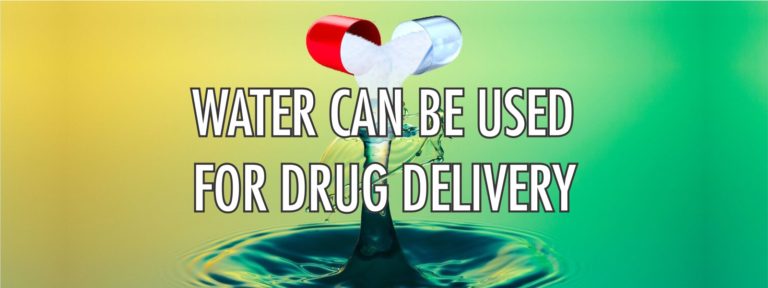
WATER CAN BE USED FOR DRUG DELIVERY
The mechanism of ACS Nano, near-infrared (NIR) light from a low-power laser to heat pockets of water trapped within non-photo-responsive polymeric nanoparticles infused with drugs.
The water pockets absorb the light energy as heat, which softens the encapsulating polymer and allows the drug to be released into the surrounding tissue. The process can be repeated multiple times, with precise control of the amount and dispersal of the drug.
The combined use of hydrated polymers and near-infrared light appears to resolve a host of technological and health barriers that have hindered previous, similar approaches.
Earlier efforts to use NIR-triggered release have not been widely exploited because they required special designer polymers, expensive high-powered lasers and/or the co-encapsulation of inorganic particles whose safety in the body remains questionable.
NIR at a vibrational wavelength cued to excite water molecules, which absorb the optical energy and convert it to heat. NIR is capable of penetrating biological tissues to greater depths than visible or ultraviolet light.
Explained the selectivity of heating by comparing the trapped water within particles to a glass of water and the surrounding water within the solution or tissue to a bathtub. The smaller amount of water is heated much more rapidly because of the enormous volume difference.
An obvious use of the method, said Almutairi, is light-triggered drug delivery, but with more research, she anticipates the new method could provide a variety of industrial, medical and scientific applications, including “any technological application requiring that chemistry be controlled in time and in space, such as in catalysis or self-repairing materials or light-activated sunscreens or pesticide dosing.”

